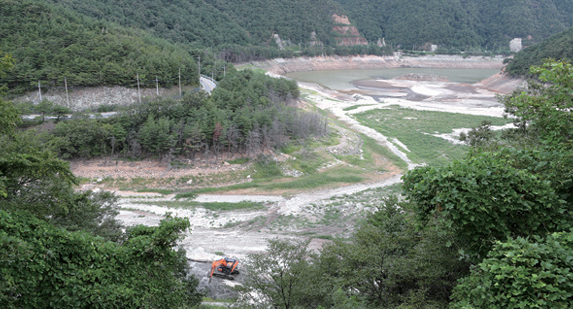
Gangneung City, located in Gangwon Province, has faced its worst-ever drought on record, leading to a severe water shortage crisis. The water level of the city’s main reservoir, Obong Reservoir, once dropped to a dangerously low point, forcing authorities to implement water rationing measures affecting both drinking water and daily household use in several areas. According to the city authorities, as of September 7th, the reservoir — which supplies water to about 180,000 residents — stood at only 12.7% of capacity, just one-sixth of the average level of 71.2%. With water levels falling by 0.3 to 0.4%p per day and hitting new lows, the government mobilized military and private water trucks to deliver emergency supplies. Notices urging residents to conserve water were posted across apartment complexes, and some citizens traveled to nearby areas to do laundry or bathe. Amid these difficulties, heavy rainfall on September 12th and 13th brought some relief to the community. In addition, another 69.5mm was recorded upstream of the reservoir on September 17th, raising hopes for a partial recovery. As of September 18th, the Obong Reservoir’s water level had risen to 26%, marking a noticeable improvement from the initial low. The city announced plans to gradually ease water rationing once the reservoir stabilizes at a safer level. However, experts warned that short-term rainfall alone cannot resolve the fundamental problem, stressing the need for long-term water resource management strategies to prevent future crises.
